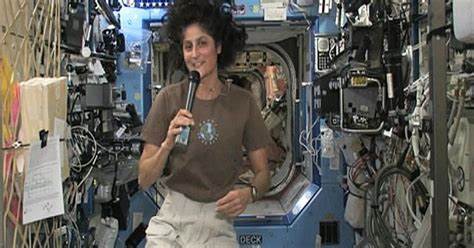Boeing’s Starliner spacecraft has faced significant delays and technical issues, resulting in a financial hit of $125 million, according to recent securities filings.
This brings Boeing’s total loss on the Starliner program to $1.6 billion since 2016, as the aerospace giant struggles to compete with SpaceX’s more experienced and cost-effective Crew Dragon. mission, which launched in June and was initially expected to last about eight days, has been extended due to a series of propulsion system problems.
These issues have raised concerns about the spacecraft’s ability to safely return its crew, veteran Nasa astronauts Butch Wilmore and Sunita Williams, to Earth. Nasa is now considering using a Crew Dragon capsule as a contingency plan for their return.
The mission’s complications began with the Strainer’s launch abroad on Atlas V rocket.
Despite detecting a helium leak before takeoff, it was deemed manageable at the time. However, more than three weeks into the mission, the astronauts remain uncertain about their return date due to ongoing problems, including helium leaks and thruster failures. Nasa and Boeing have been working to address these issues, but the timeline for a safe return remains undetermined.
Boeing’s struggles with the Starliner have been costly. The company has incurred $1.5 billion in cost overruns beyond its $4.5 billion Nasa development contract.
Nasa aims to establish Starliner as a second U.S. spacecraft capable of transporting astronauts to the ISS, alongside SpaceX’s Crew Dragon, which has been the primary vehicle since 2020.
The delays have also impacted Nasa’s broader mission schedule. The launch of SpaceX’s Crew-9 mission, initially scheduled for August 18, has been postponed to September 24, as the ISS can only accommodate two docking spacecraft at a time. This means Starliner must depart or Crew-8 must return before Crew-9’s arrival.
Despite the setbacks, Boeing remains confident in Starliner’s capabilities. “The mission has provided valuable data, despite the issues encountered,” said Mark Nappi, Boeing’s vice president and program manager. “This is part of our process to refine and improve the spacecraft for future missions.”
The undocking and return to Earth represent the most complex phases of Starliner’s test mission.
Nasa officials are taking the time to understand the cause of the thruster failures, valve issues, and helium leaks before proceedings with the return. The success of this mission is crucial for Boeing, as it aims to secure future crewed flights to the ISS and restore confidence in its space program.
Also Read: Chaos In Bangladesh: India Brings Back 190 Non-Essential Staff From Dhaka High Commission












